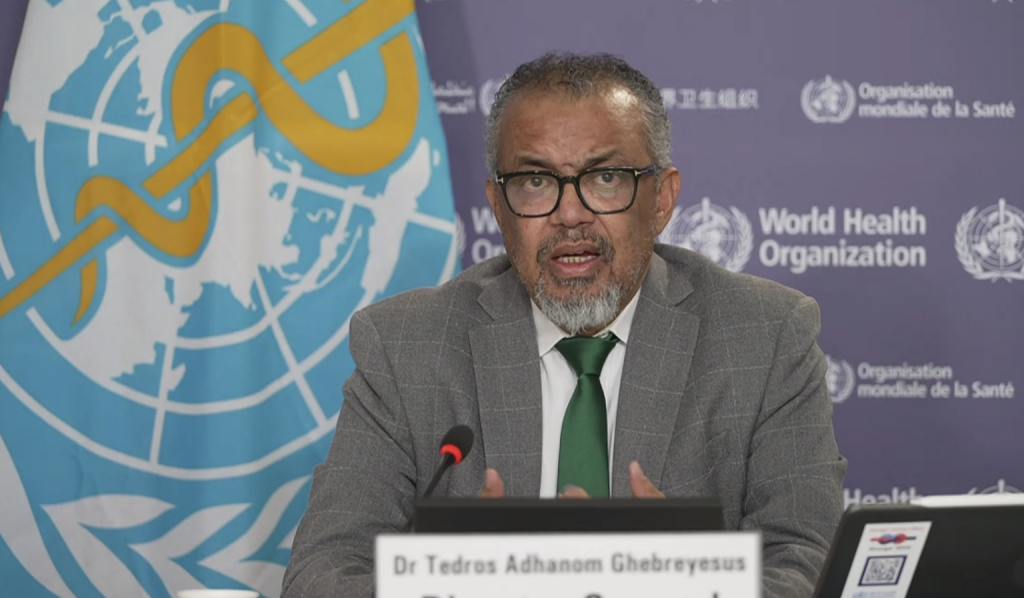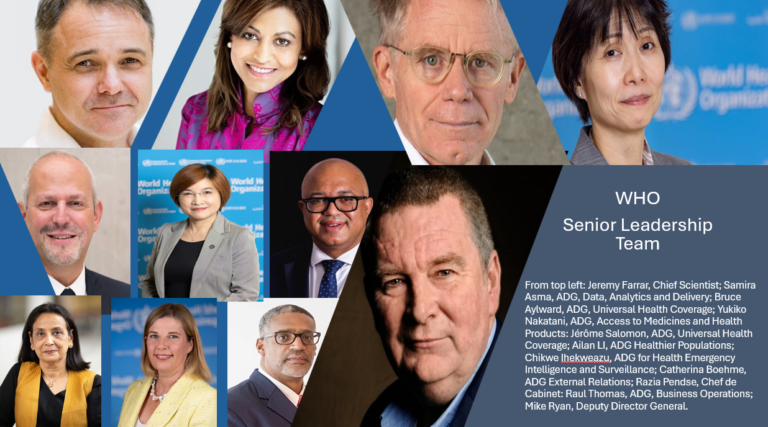By Haruna Gimba with agency report
The World Health Organization (WHO) has announced a brand-new leadership team, including a dramatically reduced number of leaders and a major shake-out of longstanding faces.
Health Policy Watch reports that the shake-up includes Dr Mike Ryan, the Deputy Director General and emergencies director, and Dr Bruce Aylward, who helped the Director-General steer the organization through the COVID-19 crisis but also got the heat for some of the mistakes made by the organization in the process.
In Ryan’s place, Dr Chikwe Ihekweazu, a Nigerian-German who is currently head of Health Emergency Intelligence and Surveillance at a WHO pandemic hub in Berlin, will take over as head of the entire health emergencies operation at headquarters, the largest department in the organization, Health Policy Watch learned from an internal email sent by the Director General, Dr Tedros Adhanom Ghebreyesus to staff Wednesday morning.
A formal WHO announcement followed shortly afterwards during remarks by Tedros at the opening meeting of the Programme Budget and Administration Committee (PBAC), a member state group convening ahead of next week’s World Health Assembly.
Dr Jeremy Farrar, a well-respected British scientist and former head of Wellcome Trust, will take on the second biggest appointment as Assistant Director-General (ADG) of Health Promotion, Disease Prevention and Control – one of the major pillars of the new organization, which will consolidate the 10 existing divisions into four.
Farrar will be replaced as Chief Scientist by Dr Sylvie Briand, former director of WHO’s Epidemic and Pandemic Preparedness and Prevention Department and current director of the Global Pandemic Preparedness and Monitoring Board, an independent body co-convened by the WHO and the World Bank to ensure preparedness for global health crises.

Japanese national Dr Yukiko Nakatani will remain on the team as head of the third new programme division, Assistant Director General of Health Systems.
Raul Thomas, of Trinidad and Tobago, will remain as WHO’s ADG of Business operations along with Razia Pendse, an Indian national, as the ‘Chef du Cabinet.’
In his announcement to staff, Tedros said that the appointments would take effect on 16 June. Speaking shortly afterwards to the PBAC, he added, “The new team has been chosen after very careful consideration, and to ensure gender balance and geographical representation.
“I am confident that this new team, under the restructured organization, is best positioned to now guide WHO as we face the challenges of the coming years.”
Early reactions to new team
Very initial reactions from staff inside the organization and outsiders seemed to be positive.
“It was a difficult decision for the DG, because he had to ensure, gender, geographical equity, and that donors priorities were also met,” said one long-time WHO insider, “but overall it seems like a good balance,” noting that most of the new appointees have solid professional reputations.
The sweep out of old leadership long associated with Tedros’ tenure may help improve the organization’s image and help press “reset” for further changes, the source added.
Notably, there is neither a Chinese nor an American in the new leadership team – reflecting perhaps an attempt to sidestep the fraught geopolitical tensions that have plagued the organization since COVID.
Along with Ryan, Aylward, a Canadian physician, who was blamed by members of his government for pro-china bias at the height of the pandemic, is also gone.
Farrar, meanwhile, has emerged as an even more senior figure in the agency shake-up and someone to watch for the future.
Briand, a French national, as head of research offers the WHO the opportunity to strengthen its organizational links to European research institutions at a time when the United States is cutting funding for science research and innovation both at home and abroad.
“In that context, it’s historic to see a French national become head of research,” said one WHO scientist.
WHO Organization as of January 2025 boasted 10 divisions and 76 department directors.

The new team now faces the big challenge of reducing the number of WHO directors at headquarters by more than half, in line with a plan to dramatically cut WHO’s budget in the face of the loss of funds due to the US withdrawal, WHO’s largest donor, from the agency, announced by US President Donald Trump in January.
Facing a $600 million shortfall in 2025 and a $1.7 billion funding gap for the 2026-2027 biennium, according to the latest estimates, the WHO reorganisation would cut the number of departments at headquarters by nearly half, from 76 department directors as of January 2025 to around 34 departments and directors, according to the new organ-gram.
The number of directors at headquarters would be slashed by more than half, from 76 to 34, according to Tedros, speaking to PBAC.
“Decisions about which directors will lead which departments will be made following the World Health Assembly. That, I know, will also be tough, given the downsizing from 76 to 34 departments,” Tedros said in his message to PBAC members.
“I emphasize that our focus on strengthening our country offices is unchanged, although we do plan to close some offices in high-income countries that no longer need in-country support.”
Along with that, cuts of 30-40% in the nearly 2600 rank-and-file WHO staff at headquarters are also likely, analysts have predicted, based on WHO’s existing budget shortfall there, the biggest in the organization.
“We anticipate that the most significant staff reductions will be at headquarters, while regional offices will also be affected to varying degrees,” Tedros told PBAC, adding that WHO has introduced “a range of support mechanisms, and we are committed to supporting the mental health and well-being of all our colleagues.”
Salary gap by region for 2025 as presented to WHO member states in March, shows more than half of the deficit is in headquarters.
“Now they have to cut down 50% of the directors, so the work is only begun,” one observer said. “In any case this is a transitional team because the Director-General will complete his term in two years’ time.”
The retrenchment follows years of expansion during the COVID pandemic, and post-COVID outbreaks and humanitarian crises, when the number of WHO’s most senior directors nearly doubled, along with the ranks of consultants. See related story:




